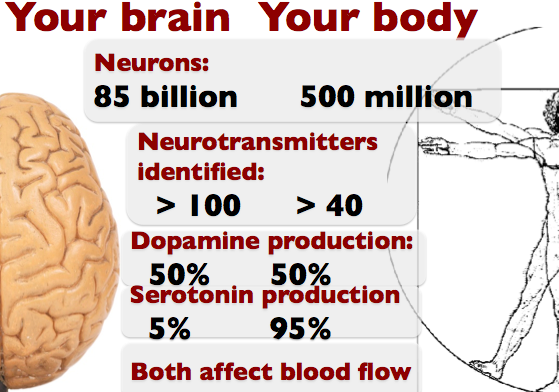- Home
- Prez. handout sets
- Non-English majors (warm-ups & tasks)
- ELT & the Science of Happiness (Positive Psychology)
- DIY Neuro-ELT
- Physical Activity in the ELT class
- Energy breaks
- Extensive Reading
- Reading aloud
- Questioning comprehension questions
- Language Learning & the Senses
- Task Planning
- Innervoice
- Imagination (mental imagery/guided journeys)
- Mind Maps
- Speaking tasks (dialogs)
- Talking about Japan
- Misc. fluency tasks
- English in 3D (a fresh look at traditional tasks)
- Engagement
- Firsthand, misc
- Odds and ends
- Learning to embrace rainy season
- Songs for kids' classes
- My students teaching kids
- John & Marc's BBQ
- Contact Marc
- Thanks, Mike!
- Extensive Reading
- Listening Links
- transfer
- Tohoku ELT EXPO2019
- Aomori BOE resource page
- Making learning visible Firsthand
- Christmas Party 2013
- Teach your passion
- Think page sign up
- •••
- TYS
- Kansai JACET links
- Marc's morning routine
- The History of your Future Success
- Mindsets: fixed & growth plus the Power of YET
- EF song project
- EF2 song project
- PELT
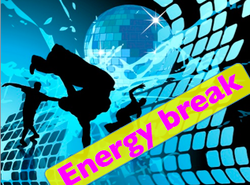
Updated 12/2021
This page is for "energy breaks" -- short (usually less than 5 minute) activities to have EFL/ESL learners engage in physical activity. Research shows that exercise and movement are useful for learning. Each PowerPoint (PPT) slideshow introduces a physical task as well as a "brain byte" -- a bit of neuroscience that your students will, I hope, find interesting and useful. Actually, you don't really need to use the PTT. But having it might help make it clear to the learners why you are asking them to do something different than most of their classes. Click on the pictures to get the PPTs.
A PDF of the "brain bytes" only (no exercises) is HERE. If PowerPoint isn't practical in your teaching situation, you can just use the ideas from the PPTs. You might want to print out the brain bytes for the students or at least make a large single copy to share the information with them.
In addition to the PowerPoints, the main reason for this page, I have a handout of 5-minute physical tasks for the language classroom and another of warm-up activities called Let's get physical. Click on the titles for copies.
The top ones are regular exercise tasks. A section of songs and tai chi energy breaks are at the bottom of the list.
Want to know the science behind "energy breaks/ brain breaks"? HERE is an explanation.
HERE is a one-page list summarizing 16 energy breaks.

NEW. Teaching kids? Here's a great 3-minute video from Edutopia on "Brain Breaks" (the same idea). And HERE is an article about why.
8 Physical Exercise Energy Breaks
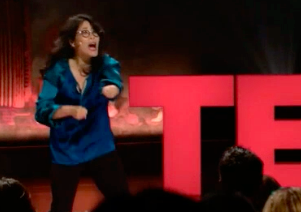
1-minute Exercise Routine
(IntenSati) with Dr. Wendy Suzuki.
Plus video (be sure to download this, too.)
From a TED talk, Dr. Suzuki, a neuroscientist at NYU, leads us through a spirited exercise routine. Plus the good things exercise does for the brain and the body.
(IntenSati) with Dr. Wendy Suzuki.
Plus video (be sure to download this, too.)
From a TED talk, Dr. Suzuki, a neuroscientist at NYU, leads us through a spirited exercise routine. Plus the good things exercise does for the brain and the body.

5 right here, right now
This grew out of a conference we (the FAB/NeuroELT people) did in the Philippines. We realized people were sitting down for far too long. So we invited them to suggest 5 exercises they could do in the limited space of a conference room (in that case, with unmovable seats). Then we did the exercises in pairs for one minute. When a partner wants to change the exercise, s/he just makes an "X" with arms and models a new one. The brain byte introduces the idea of the body--the gut, mainly-- as a "second brain" (lots of neurotransmitters -- brain chemicals). This will be a new idea for many teacher. The information is provided. See below.
This grew out of a conference we (the FAB/NeuroELT people) did in the Philippines. We realized people were sitting down for far too long. So we invited them to suggest 5 exercises they could do in the limited space of a conference room (in that case, with unmovable seats). Then we did the exercises in pairs for one minute. When a partner wants to change the exercise, s/he just makes an "X" with arms and models a new one. The brain byte introduces the idea of the body--the gut, mainly-- as a "second brain" (lots of neurotransmitters -- brain chemicals). This will be a new idea for many teacher. The information is provided. See below.
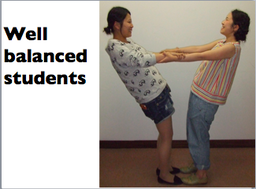
Well balanced students
A fluency activity where students balance each other's weight (imagine them forming a huge human "V") as they talk about whatever they've been working on in class. The brain byte gives information about physical activity and blood/oxygen to the brain. Again, click the picture to download.
A fluency activity where students balance each other's weight (imagine them forming a huge human "V") as they talk about whatever they've been working on in class. The brain byte gives information about physical activity and blood/oxygen to the brain. Again, click the picture to download.

Walk and Talk
Just as simple as it sounds. Students walk when working on their fluency. The brain byte points out that we were meant to walk 10-20 km every day (which basically not one does.)
Click the image to download the PPT.
Just as simple as it sounds. Students walk when working on their fluency. The brain byte points out that we were meant to walk 10-20 km every day (which basically not one does.)
Click the image to download the PPT.
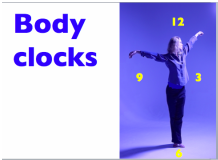
Body clocks.
Students pantomime the times at which they do various activities. Partners guess. (Have you noticed textbooks never spend enough time on "time" for students to master it?) The brain byte gives information about the importance of multi-sensory learning.
Students pantomime the times at which they do various activities. Partners guess. (Have you noticed textbooks never spend enough time on "time" for students to master it?) The brain byte gives information about the importance of multi-sensory learning.

Line up nonverbally
A series of light, fun tasks. Students do them without speaking (body language is important!). Then they speak to check their results.
The brain byte reminds the students of the importance of movement to send blood/oxygen to the brain. There are different versions of this slide show. Click the picture for a version that has 9 tasks. That's probably more than you want for one class. Use it in parts. Or, for slide shows that have 5 tasks each:. Click HERE for #1. Click HERE for #2.
A series of light, fun tasks. Students do them without speaking (body language is important!). Then they speak to check their results.
The brain byte reminds the students of the importance of movement to send blood/oxygen to the brain. There are different versions of this slide show. Click the picture for a version that has 9 tasks. That's probably more than you want for one class. Use it in parts. Or, for slide shows that have 5 tasks each:. Click HERE for #1. Click HERE for #2.
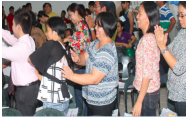
Positive Peer Neck massage
OK, this one is a little weird. But if your students are OK with physical contact, it is great. I use it on test days. Enjoy. The brain byte deals with both relaxation and oxytocin (the "hugging hormone").
OK, this one is a little weird. But if your students are OK with physical contact, it is great. I use it on test days. Enjoy. The brain byte deals with both relaxation and oxytocin (the "hugging hormone").

Songs
Here are four energy breaks, each teaching a song and encouraging the students to both sign and the actions. Click song titles for the Energy Break PowerPoint.
What a wonderful world. Louis Armstrong's hit song. This version is done by "Playing for Change", a foundation that encourages international communication and funds music and art education around the world. In this energy break, students are encouraged to sing and match the children's actions from the video.
Don't Worry, Be Happy. A Playing for Change version of the Bobby McFerrin classic. Students are encouraged to sing and match the rhythm of the song by clapping, snapping fingers or moving their bodies (i.e., dancing!).
May you be happy. This is both a song and a meditation. They lyrics come for a traditional "loving kindness (compassion)" meditation. Students decide on gestures for the songs main ideas, then do them as they sign. They also point to different people for the various pronouns (I, you, we).
This song is part of the University of Wisconsin-Madison's Center for Healthy MInd's Kindness Curriculum. Links to those program are in the powerpoint and on this page: Mindfulness for kids.
In case the PowerPoints you downloaded won't play the videos, you can download those separately and insert them into the Energy Breaks:
Wonderful World video
Don't Worry, Be Happy video
May you be happy video
Note that with these 3 new activities, there are now 16 Energy Breaks on this page. That matches the number of weeks in the university academic year in Japan (where I teach) and in some other countries. So you can do a new one each week of the semester!
Here are four energy breaks, each teaching a song and encouraging the students to both sign and the actions. Click song titles for the Energy Break PowerPoint.
What a wonderful world. Louis Armstrong's hit song. This version is done by "Playing for Change", a foundation that encourages international communication and funds music and art education around the world. In this energy break, students are encouraged to sing and match the children's actions from the video.
Don't Worry, Be Happy. A Playing for Change version of the Bobby McFerrin classic. Students are encouraged to sing and match the rhythm of the song by clapping, snapping fingers or moving their bodies (i.e., dancing!).
May you be happy. This is both a song and a meditation. They lyrics come for a traditional "loving kindness (compassion)" meditation. Students decide on gestures for the songs main ideas, then do them as they sign. They also point to different people for the various pronouns (I, you, we).
This song is part of the University of Wisconsin-Madison's Center for Healthy MInd's Kindness Curriculum. Links to those program are in the powerpoint and on this page: Mindfulness for kids.
In case the PowerPoints you downloaded won't play the videos, you can download those separately and insert them into the Energy Breaks:
Wonderful World video
Don't Worry, Be Happy video
May you be happy video
Note that with these 3 new activities, there are now 16 Energy Breaks on this page. That matches the number of weeks in the university academic year in Japan (where I teach) and in some other countries. So you can do a new one each week of the semester!
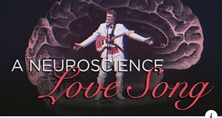
A Neuroscience Love Song. This video is from National Public Radio. It explains the brain science of what is happening when we fall in love and then when we stay in love. At the beginning, there is a 1-minute bit of the song, then it stops and the slides describe what is happening with Norepinephrin (basically the fight or flight response), dopamine, serotonin (surprisingly, first the level drops, later it goes back up), and oxytocin. Then the entire song plays. Encourage you students to stand and move (dance?) with partner. If you want a more complete explanation of the science, listen to this 11-minute "Short Wave" Science Podcast. The science in this one is more complex than the other songs -- but everyone is interested in LOVE. This might be a good one to teach around Valentines Day.
4 Tai Chi Energy Breaks

Here is a 4-part series introducing Tai Chi (and a little brain science). Part one introduces Tai Chi and gives about 1 minutes of practice. Parts 2 & 3 each teach an additional minute of the routine. Finally, the last part practices the full 5-minute routine. Click on these links to download the PowerPoints:
TaiChi#1 TaiChi #2
TaiChi#3 TaiChi 5-minute routine
In case the videos don't automatically download with the PowerPoint, download them separately and insert them into your copy of the PowerPoint.
TaiChi intro explanation
TaiChi#1 video TaiChi #1 includes both the explanation and video #1 TaiChi #2 video TaiChi #3 video
tai_chi_full.mov <-that's the video for the 5-minute routine.
These are build around a Youtube video "Tai Chi 5-minutes a Day" Module 01. Can can see the whole thing HERE.
The Psychology Today article with the Tai Chi brain science info is HERE.
As a teacher, I love it when I learn something from my students. This is based on a lesson plan from Satsuki McNeill of Nagoya, Japan. She found the youtube.com video, too. Thank you!
TaiChi#1 TaiChi #2
TaiChi#3 TaiChi 5-minute routine
In case the videos don't automatically download with the PowerPoint, download them separately and insert them into your copy of the PowerPoint.
TaiChi intro explanation
TaiChi#1 video TaiChi #1 includes both the explanation and video #1 TaiChi #2 video TaiChi #3 video
tai_chi_full.mov <-that's the video for the 5-minute routine.
These are build around a Youtube video "Tai Chi 5-minutes a Day" Module 01. Can can see the whole thing HERE.
The Psychology Today article with the Tai Chi brain science info is HERE.
As a teacher, I love it when I learn something from my students. This is based on a lesson plan from Satsuki McNeill of Nagoya, Japan. She found the youtube.com video, too. Thank you!
